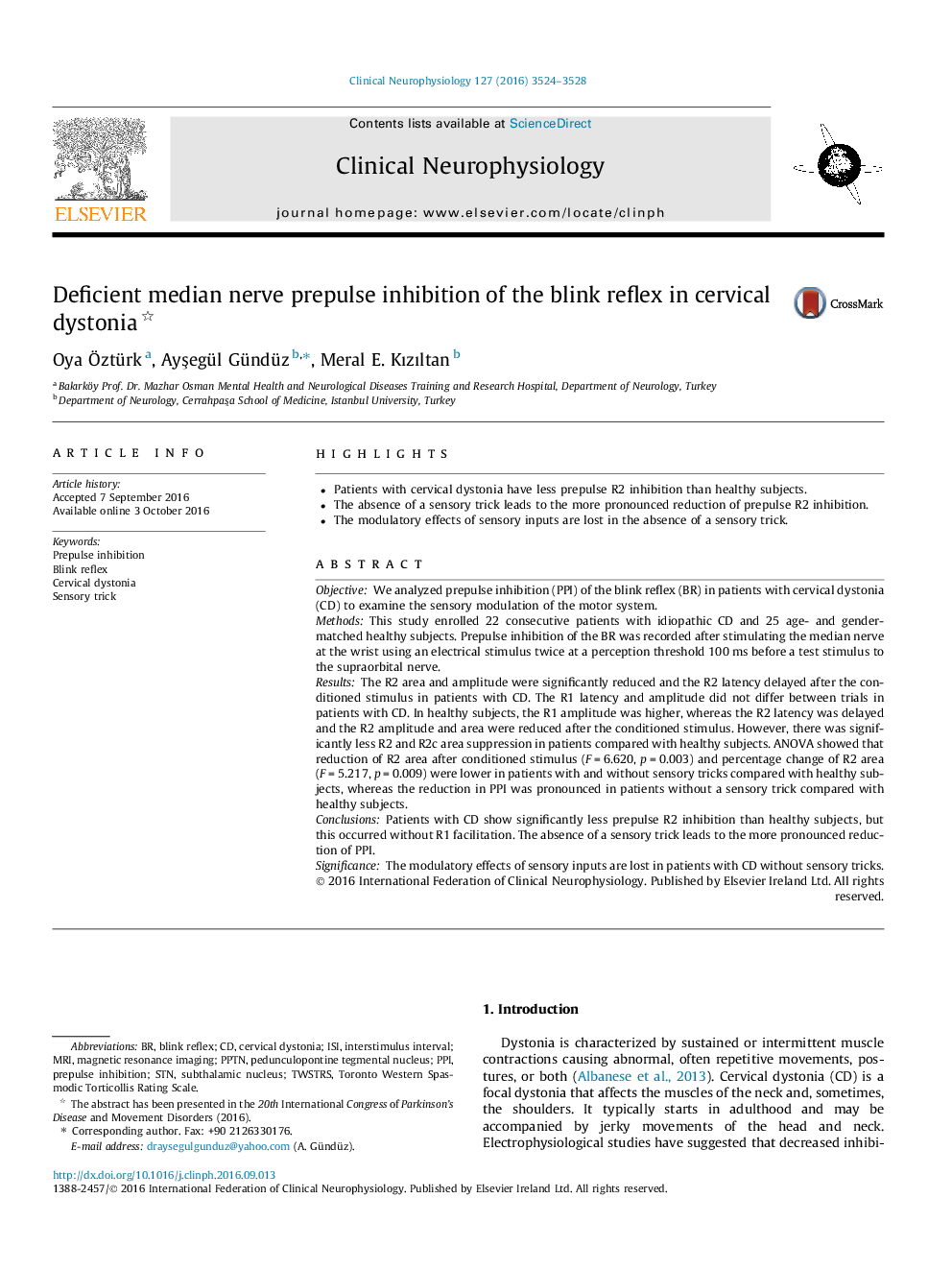| Article ID | Journal | Published Year | Pages | File Type |
|---|---|---|---|---|
| 5627478 | Clinical Neurophysiology | 2016 | 5 Pages |
â¢Patients with cervical dystonia have less prepulse R2 inhibition than healthy subjects.â¢The absence of a sensory trick leads to the more pronounced reduction of prepulse R2 inhibition.â¢The modulatory effects of sensory inputs are lost in the absence of a sensory trick.
ObjectiveWe analyzed prepulse inhibition (PPI) of the blink reflex (BR) in patients with cervical dystonia (CD) to examine the sensory modulation of the motor system.MethodsThis study enrolled 22 consecutive patients with idiopathic CD and 25 age- and gender-matched healthy subjects. Prepulse inhibition of the BR was recorded after stimulating the median nerve at the wrist using an electrical stimulus twice at a perception threshold 100 ms before a test stimulus to the supraorbital nerve.ResultsThe R2 area and amplitude were significantly reduced and the R2 latency delayed after the conditioned stimulus in patients with CD. The R1 latency and amplitude did not differ between trials in patients with CD. In healthy subjects, the R1 amplitude was higher, whereas the R2 latency was delayed and the R2 amplitude and area were reduced after the conditioned stimulus. However, there was significantly less R2 and R2c area suppression in patients compared with healthy subjects. ANOVA showed that reduction of R2 area after conditioned stimulus (F = 6.620, p = 0.003) and percentage change of R2 area (F = 5.217, p = 0.009) were lower in patients with and without sensory tricks compared with healthy subjects, whereas the reduction in PPI was pronounced in patients without a sensory trick compared with healthy subjects.ConclusionsPatients with CD show significantly less prepulse R2 inhibition than healthy subjects, but this occurred without R1 facilitation. The absence of a sensory trick leads to the more pronounced reduction of PPI.SignificanceThe modulatory effects of sensory inputs are lost in patients with CD without sensory tricks.
